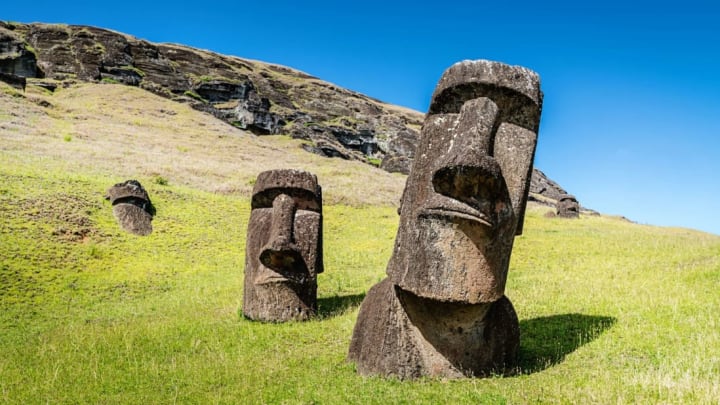Maybe this isn't a newsflash to everyone, but the Moai "heads" on Easter Island have bodies. Because some of the statues are set deep into the ground, and because the heads on the statues are disproportionately large, many people tend to think of them as just big heads. But the bodies (generally not including legs, though there is at least one kneeling statue) are there -- in many cases, underground. What's even more interesting -- there are petroglyphs (rock markings) that have been preserved below the soil level, where they have been protected from erosion.
This research report has been making the rounds; it discusses recent progress by The Easter Island Statue Project to uncover, study, and catalogue two statues. It includes (among the dry details of the research) a day-by-day journal of the work, as well as remarkable photographs showing the petroglyphs and team members excavating. Above is an image from a previous excavation (source unknown) that shows you the scale of the statues, and how deep they were buried. (Note: visitors are prohibited from climbing on the Moai; the expedition pictured above appears to predate the EISP and the current practice of conservation.)
For more on the Easter Island statues, read more about the EISP, read their extensive research reports, and check out the Wikipedia page on Moai (which also discusses the fairly well-known fact that many of the statues used to have hats or possibly topknots, known as pukao). Also interesting is the back story of archaeology on Easter Island (also known as Rapa Nui); apparently the island has been the subject of archaeological research for 119 years.
Follow Chris Higgins on Twitter for more stories like this one. You can also read the story behind this post in Chris's book The Blogger Abides.
